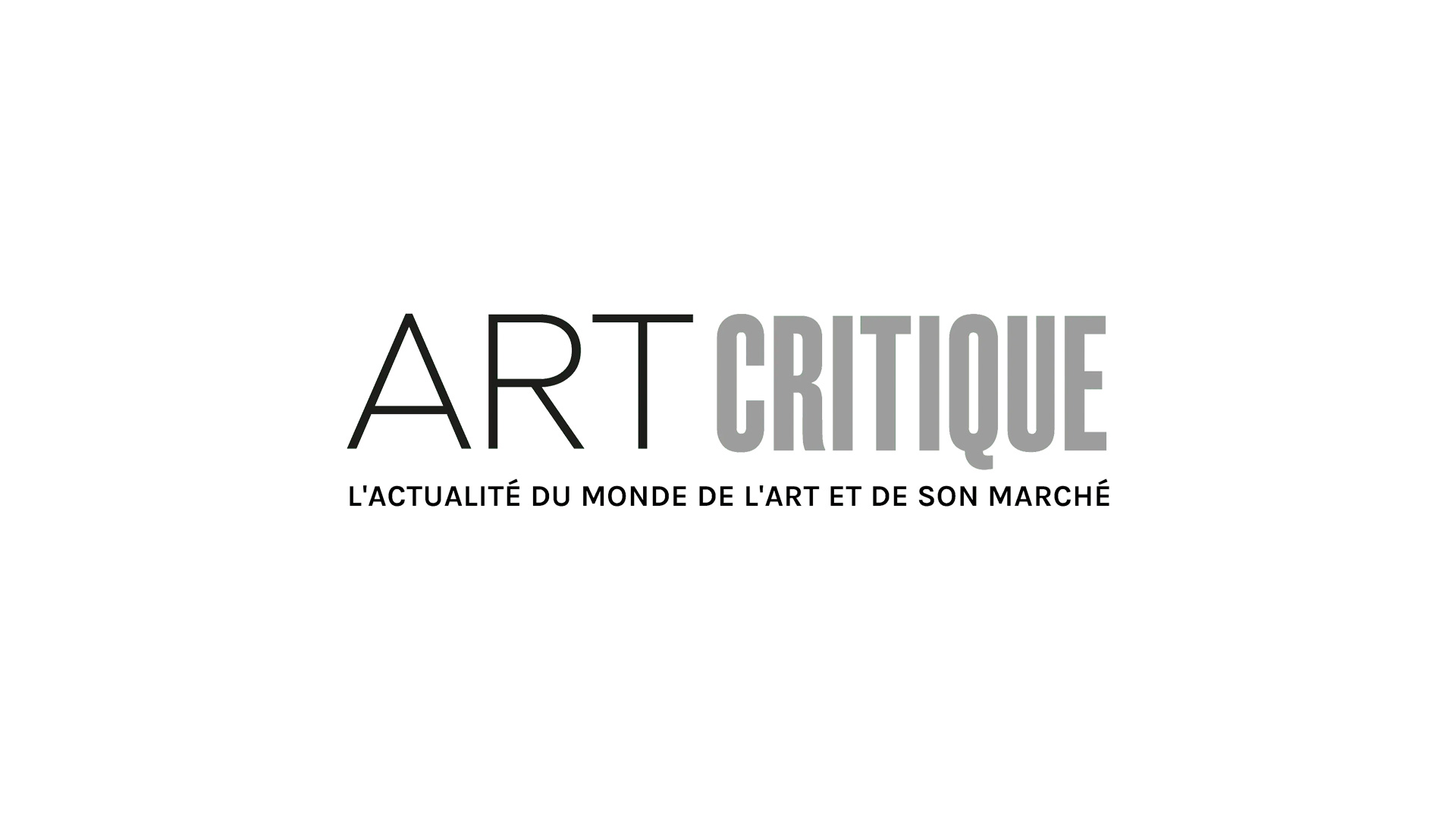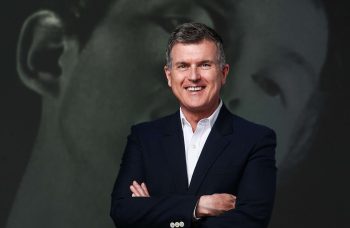On the Rue de Valois just as in City Hall, there are two kinds of politicians in charge of cultur : “politicos”, the men and women who view working in culture merely as a rung on the ladder of their political aspirations and “literary scholars”, in the broadest sense of the term, whose history and taste make them particularly aware of the cultural issues. Christophe Girard undeniably belongs to the second category. Since September 2018 he has resumed his position at the Ministry of Culture, which he had already held during Bertrand Delanoë’s term as the mayor of Paris. In the interim, he was mayor of the 4th arrondissement, an especially vibrant neighbourhood in a capital city experiencing a strong renewal; he has made City Hall considerably more accessible to book fairs and exhibits (the Fières archives exhibition in the summer of 2017 is a good example). Actually from the very beginning Christophe Girard has chosen to focus on knowledge and expertise. After graduating with a degree in Japanese literature, he began his career working in the prestigious Maison Saint-Laurent, on the edge of the world of luxury and design – where he also developed, as he reveals here, the eye of a collector. His personal story has, in part, motivated our questions about Paris not only as the mecca for books and luxury but also as the city of the image.
Guillaume de Sardes : As the deputy for culture for both Bertrand Delanoë then Anne Hidalgo during their terms as mayors of Paris you constantly reaffirmed your dedication to libraries. What place do you assign to books today? Do you think that it would be a good time to open new libraries in Paris in order to establish a balance between the east and west of the city?
Christophe Girard : A library occupies an essential place within urban life and the life of its citizens, even more than a museum or a theatre. That’s because libraries are more accessible to most people. Readers who come together there may be different; they may not all be the same age, they might not practice the same professions, share the same culture or the same history but they do share the same language. In my view, reading is important because it’s a voluntary act, one that is better suited to developing critical thinking than television. All reading is motivated by a desire to understand. To be satisfied with passively receiving information can only lead to a decline in our awareness. Paris has 70 libraries which is substantial. But for reasons that I will elaborate, I can only hope for new projects. Opportunities must be seized and we need to show resourcefulness when it comes to financing them. In order to build the Marguerite Duras library in the 20th arrondissement, that Bertrand Delanoë and I had wanted, a part of land available (an old garage) had been transferred to a private group, thereby releasing funds. The same thing had also been done in the 15th arrondissement for the Marguerite Yourcenar media centre, supported by Anne Hidalgo, then Deputy Premier.
Simply building new spaces is not the end of the story, there is still a need to ensure that things are working properly. Major reconstruction works will also allow libraries to support the digital revolution by offering new uses. We have also signed the Territory Reading Agreement which defines a plan of action in order to make reading accessible to remote audiences and those who encounter the greatest barriers to using library services.
G.S. : Who are your favourite classic authors? What book are you currently reading?
C.G. : I like Balzac and Victor Hugo and I constantly find something new to enjoy whenever I read them. Both authors have done some excellent work writing about Paris. I also really like the Japanese writer Mishima. As for books that I’m reading right now, there are two (I read many books at the same time). There is Idiocy by Pierre Guyotat who just received the Medici award and the Femina prize and Berlin 1933 by Daniel Schneidermann, an illuminating essay on the media’s passive complicity—especially in the case of foreign correspondents–in the rise of Nazism.
G.S. : By creating Nuit Blanche in 2002, then the Cent Quatre in 2008, you have shown a keen interest for contemporary design, especially for the fine arts, but are you a collector yourself?
C.G. : Yes I’ve been collecting for quite some time now. Whenever I travel, I try to find contemporary pieces that I enjoy. A piece is more than just a souvenir; it’s an opening into another country’s culture. Since my means are not unlimited, I’m one of those collectors who will sell a piece so that they can buy another. There are, however, a few pieces which I never want to part with: a small painting by Poliakov that I acquired a long time ago, some stained glass drawings by Fernand Léger, a drawing that François Morellet offered me for my 60th birthday, some jewellery by Jean-Michel Othoniel, a sculpture (a rhinoceros) by Xavier Veilhan, a gouache by Viera da Silva and many more.
G.S. : The Louis Vuitton Foundation opened in 2014. Beginning in 2019 the stock exchange will acquire the Pinault collection. In 2024, the Cartier Foundation must move to a new space in the Louvre des Antiquaires. These new contemporary art exhibit spaces are all supported by luxury houses. As someone who is very familiar with luxury and art, what do you think of the merger—or perhaps even entanglement—of these two worlds?
C.G. : I’ll answer by asking you a question : where do you think the money comes from? Art, just like education, is very expensive. We should be delighted that businessmen like Bernard Arnault, François Pinault, Philippe Houzé and Laurent Dumas decided to dedicate part of their fortunes to making contemporary art more accessible. Furthermore, they’re not the only ones. But the flirtation between art and fashion is easy to understand; all major stylists have a close relationship with art. Think about Yves Saint Laurent’s Mondrian dress which has become the symbol of style of the 1960s! It seems, however, important to remember that the same Yves Saint Laurent declared, ”We are craftspeople”. Gabrielle Chanelle before him had said that the dressmakers were only suppliers, not artists. The distinction is not without importance; it’s a safeguard. I find it interesting to shake things up within the world of luxury and to introduce a certain esthetic disorder, like when Murakimi had reinterpreted the famous Louis Vuitton monogram in 2003. But it should not become systematic because then we leave luxury behind and enter the world of marketing and the unregulated and common dictates of the marketplace.
G.S. : Do you envision any partnerships between these new art venues and the Paris museum establishment, meaning the 14 municipal museums in the city?
C.G. : That’s something for the museums’ individual directors to decide, but it seems to me that there’s a more important question to be asked. The large corporations that we mentioned have created their own exhibition venues. That’s very good but these corporations were also important sponsors of public museums. When they began investing in their own foundation, they turned away from them. The State and the ministers of Culture should demand consideration for the tax benefits granted to these big corporations to support contemporary art. We should have asked that in addition to the millions invested in the construction of new spaces (spaces which bear their names and that contribute to their prestige) that sums should also be allocated to major public museums. Because if they find themselves in financial decline the State will have given with one hand and then have to give back with the other.
G.S. : On a global level, France holds a unique place in the field of luxury since three of the ten biggest global corporations are French: there is Moët Hennessy Louis Vuitton SE (LVMH) which is number one, followed by Keuring and L’Oréal. For more than a century, Paris has been the showcase of this culture of refinement. Yet there are few schools that offer training for careers in luxury. You’ve attempted to remedy that situation by supporting the creation of the L’Institut Français de la Mode (IFM) which has become an international standard. Do you think that there’s still more work to be done in this area?
C.G; Yes, because refinement is not something that can be self-proclaimed. It’s the result of many rare kinds of expertise, most often individual, and it’s necessary to organize ways to transfer that knowledge. A feather worker, an embroiderer, a shoemaker, (as an example, there are the boots worn by the horsemen of the Cadre Noir of Saumur) all have a knowledge and an aptitude of such sophistication that they would be irredeemably lost if they didn’t pass it on to the next generation and so on.
G.S. : By restoring Le Louxor and by making it an art house cinema in one of the last popular neighbourhoods in Paris (Barbes) you’ve demonstrated your dedication to cinema and to the democratization of culture. What are your plans in this area? How do you see the future of the Forum of images and the Mission cinema?
C.G. : Opening Le Louxor wasn’t budgeted for within Bertrand Delanoë’s term of office. But when the building came up for sale after having been neglected for so long, we immediately decided to save it. By doing that I think that we behaved in a responsible manner: the building, dating from the 1920s with its neo-Egyptian façade unique to Paris, is remarkable and today Le Louxor is one of the last survivors of pre-war cinema. Le Forum des images, recently under the direction of Claude Farge, is a good example of a space designed by Jacques Chirac and one that we have been able to support. For 30 years it’s been one of the places representative of moviegoers and has been able to reinvent itself by establishing, at Anne Hidalgo’s request, the Tumo Centre for Creative Technologies, a school for digital design for youth aged 12-18. The archival collection for Le Forum des Images, open to all, includes almost 6,500 films where Paris is either the subject or the setting. In a sense, enriching these collections depends on the actions of La Mission cinéma, of which one of its roles is to facilitate location shooting in Paris. Michel Gomez who directs the mission is a person of great quality and an effective intermediary between French and foreign producers. The mission also supports about 20 art house cinemas and helps produce short films.
G.S. : The two Parisian institutions dedicated to photography – one of the most accessible art forms – is about to change management. Jean-François Dubos (President) and Simon Baker (Director) have replaced Jean-Luc Monterosso and Henry Chapier who occupied these posts at the head of the Maison Européenne de la Photographie (MEP), while Quentin Bajac will succeed Marta Gill at the Jeu de Paume. What do you hope will come from these appointments?
C.G. : There many contemporary art museums all over the world that organize photography exhibits. What’s so special about Paris is that the city has so many venues dedicated specifically to photography: the MEP and the Jeu de Paume, but also the Henri Cartier-Bresson Foundation, Le BAL and galleries like Polka, Camera Obscura, Agathe Gaillard and VU’. I hope that the new directors of MEP and Jeu de Paume will continue to successfully promote their institutions as their predecessors did. I’m especially delighted by the appointment of Quentin Blanc who is returning to Paris after a stay in New York at the Museum of Modern Art (MoMA)
G.S. : Do you think that Paris will once again be the art capital that it was at the beginning of the 20th century?
C.G.: The era is rapid and shifting and comparisons are difficult to make but Paris certainly has not missed its date with the 21st century, it managed to do so even with its imperfections. Furthermore, I think a sign of that is the fact that Anne Hidalgo is involved in construction sites heralding the vision of the Paris of tomorrow. Paris is changing. Paris is on the move.






